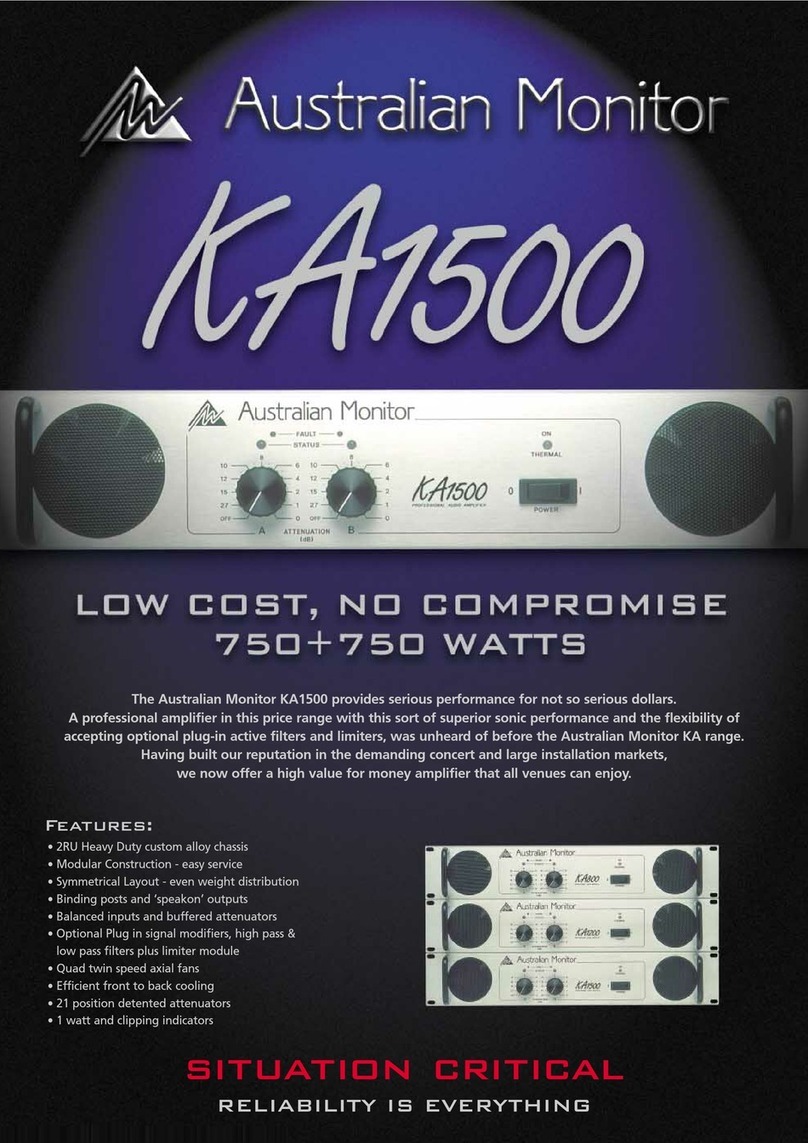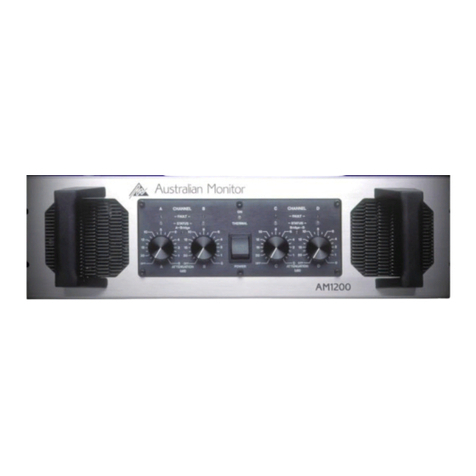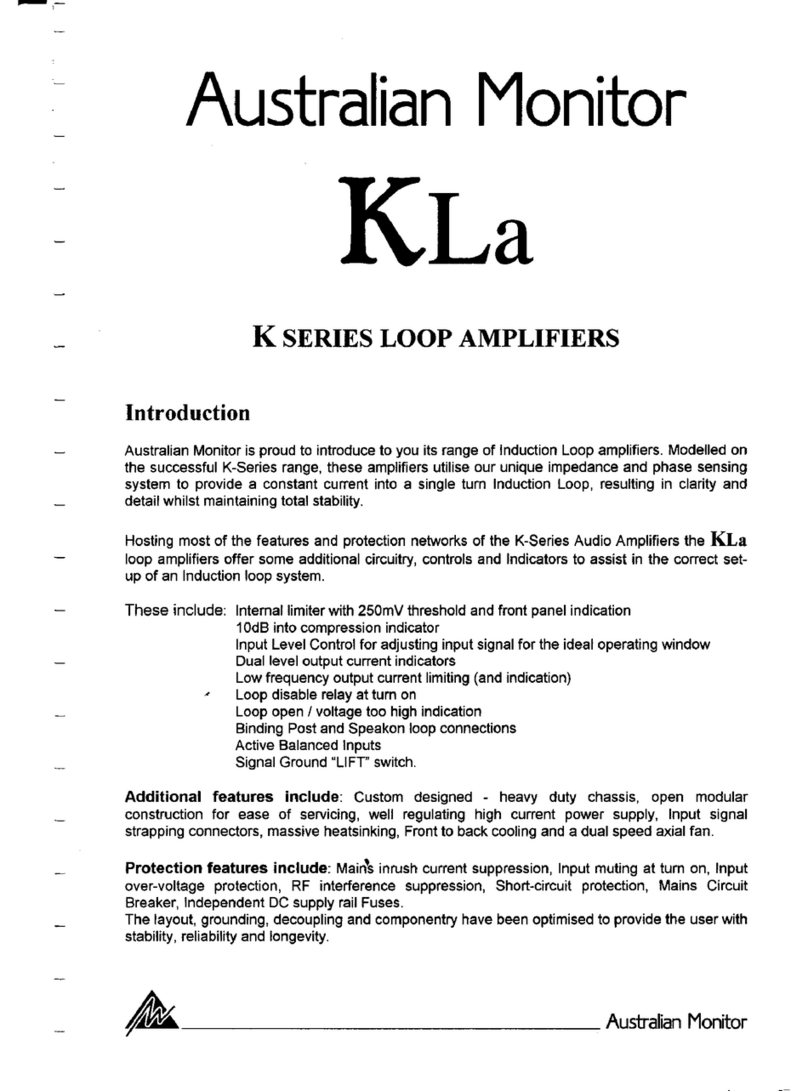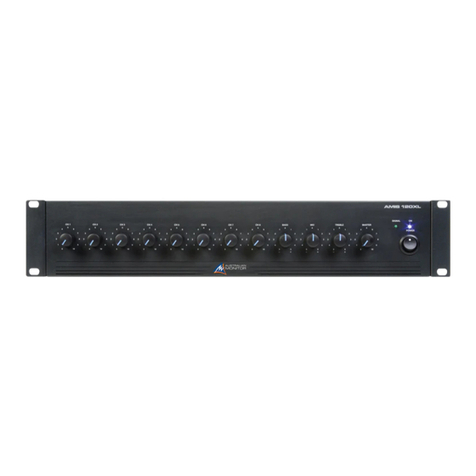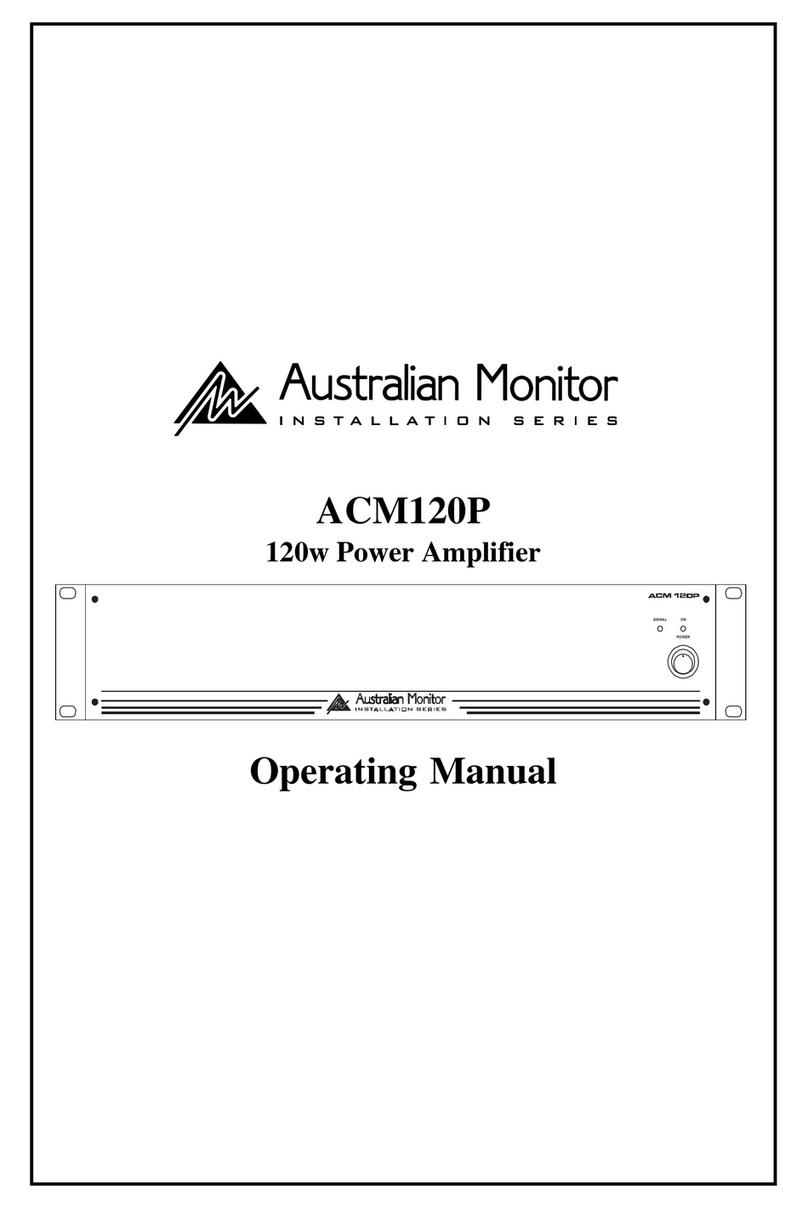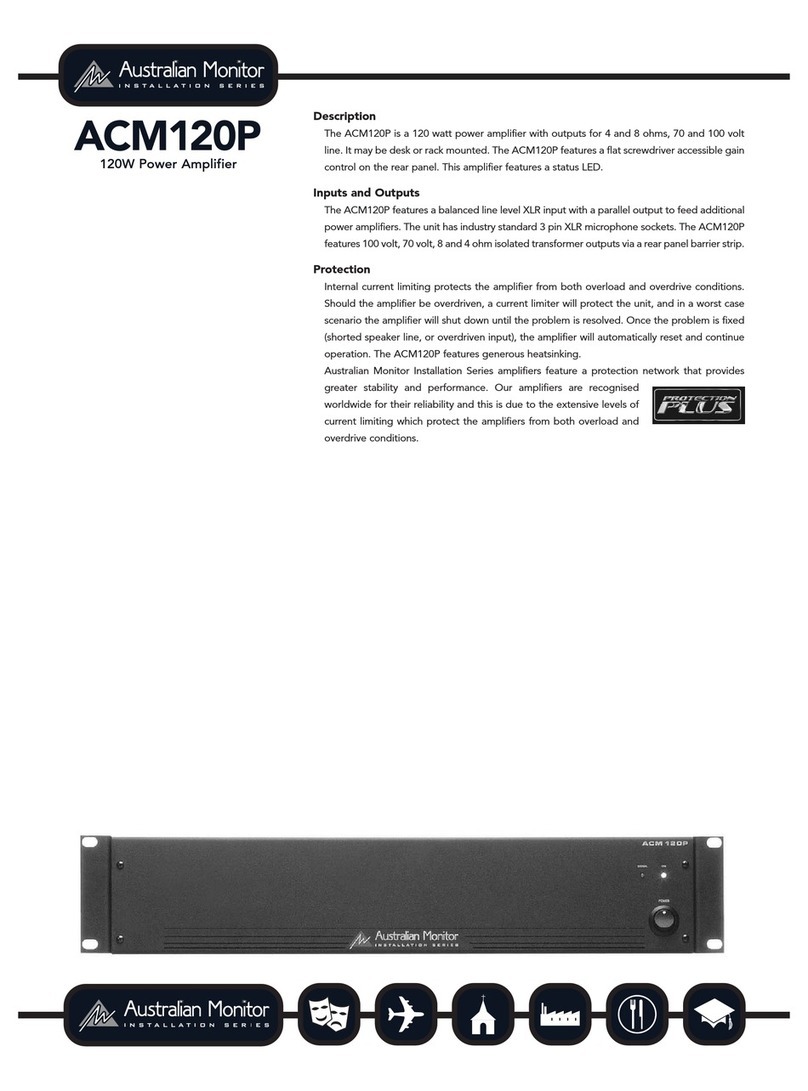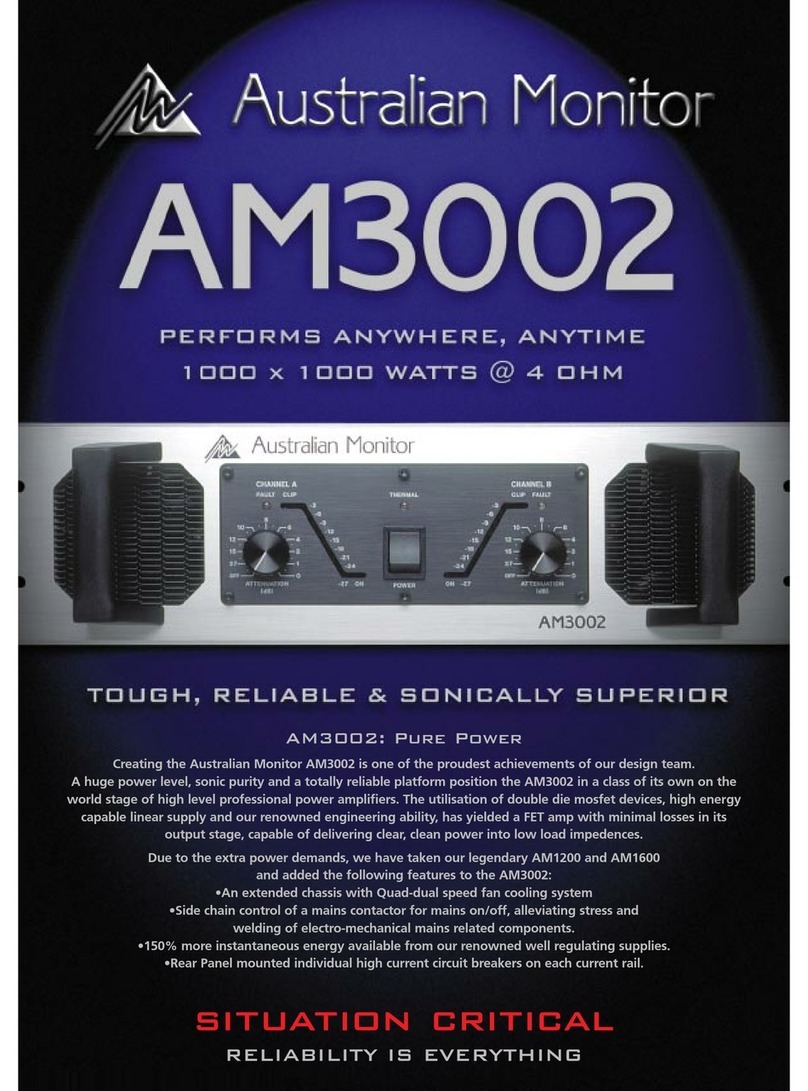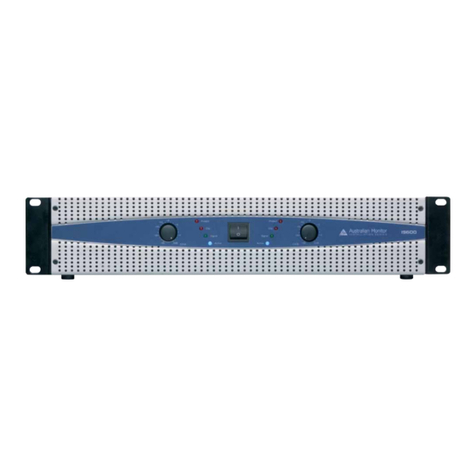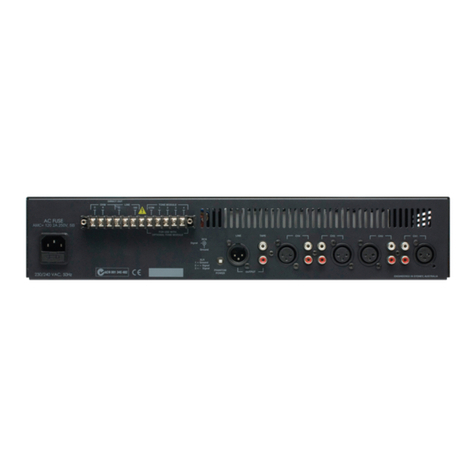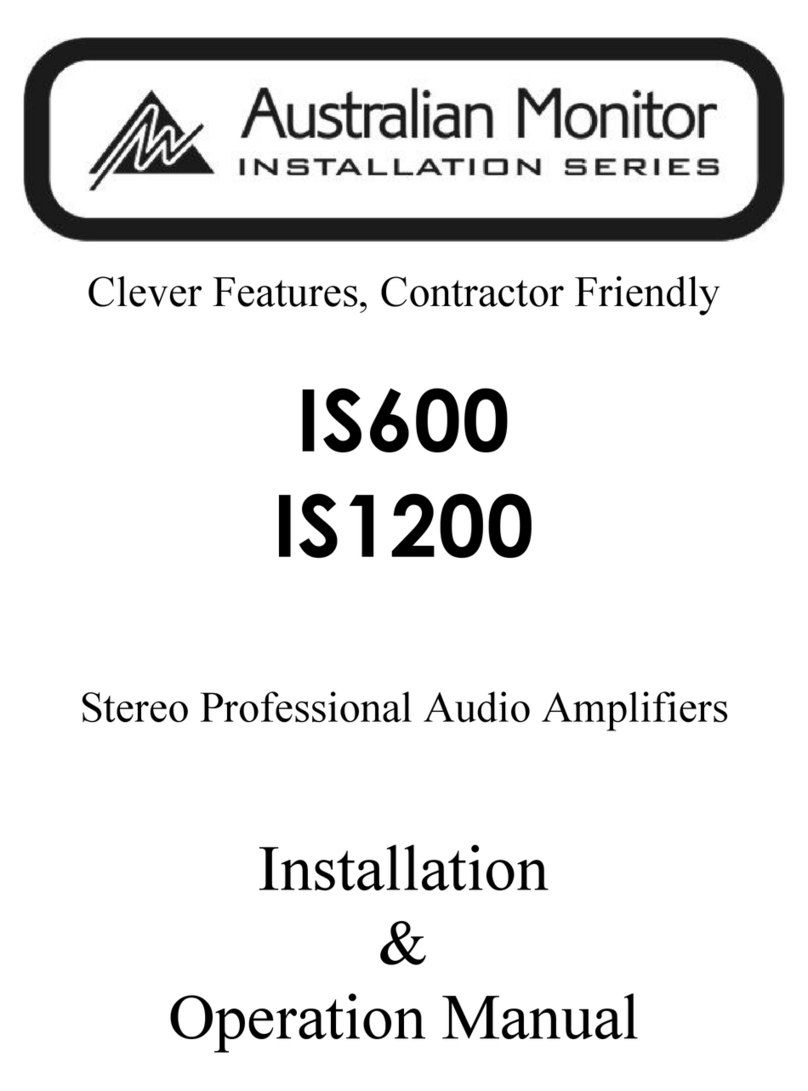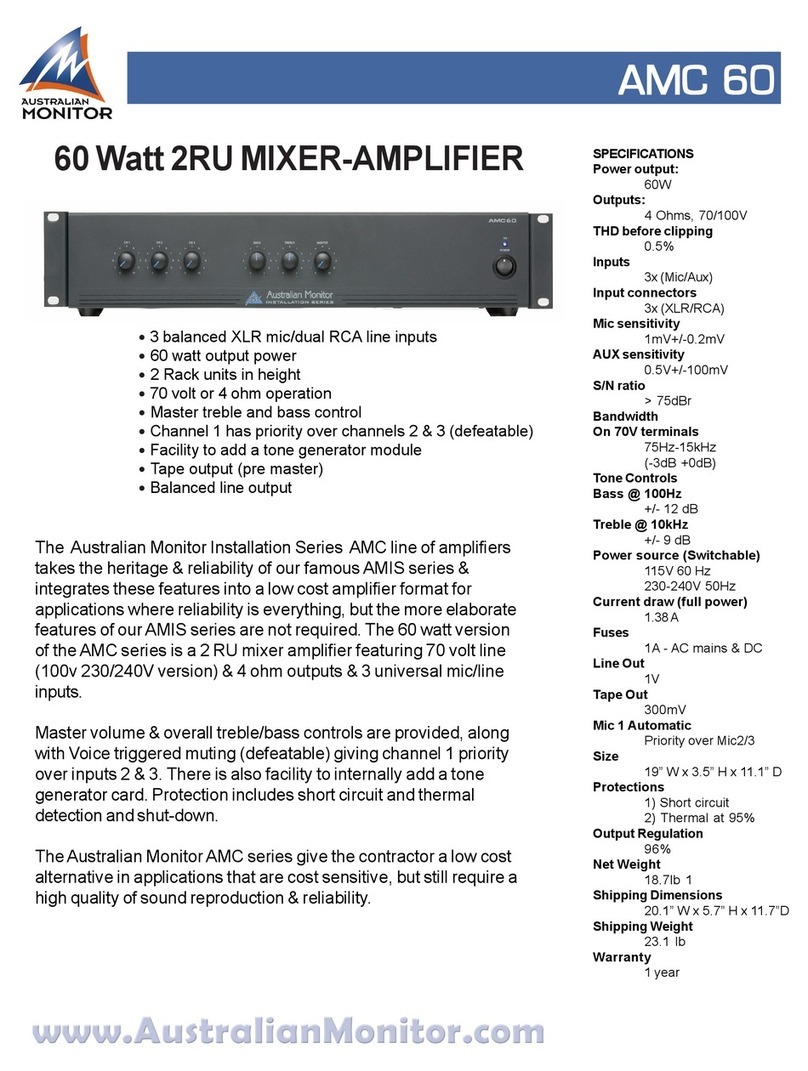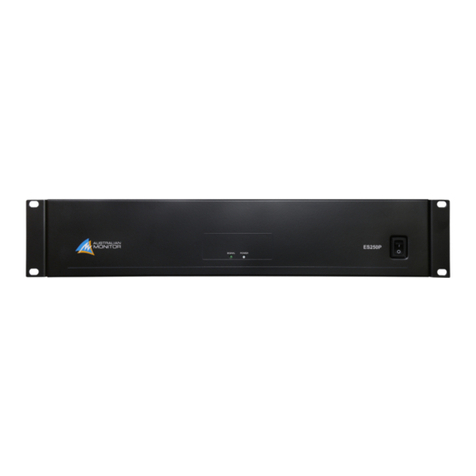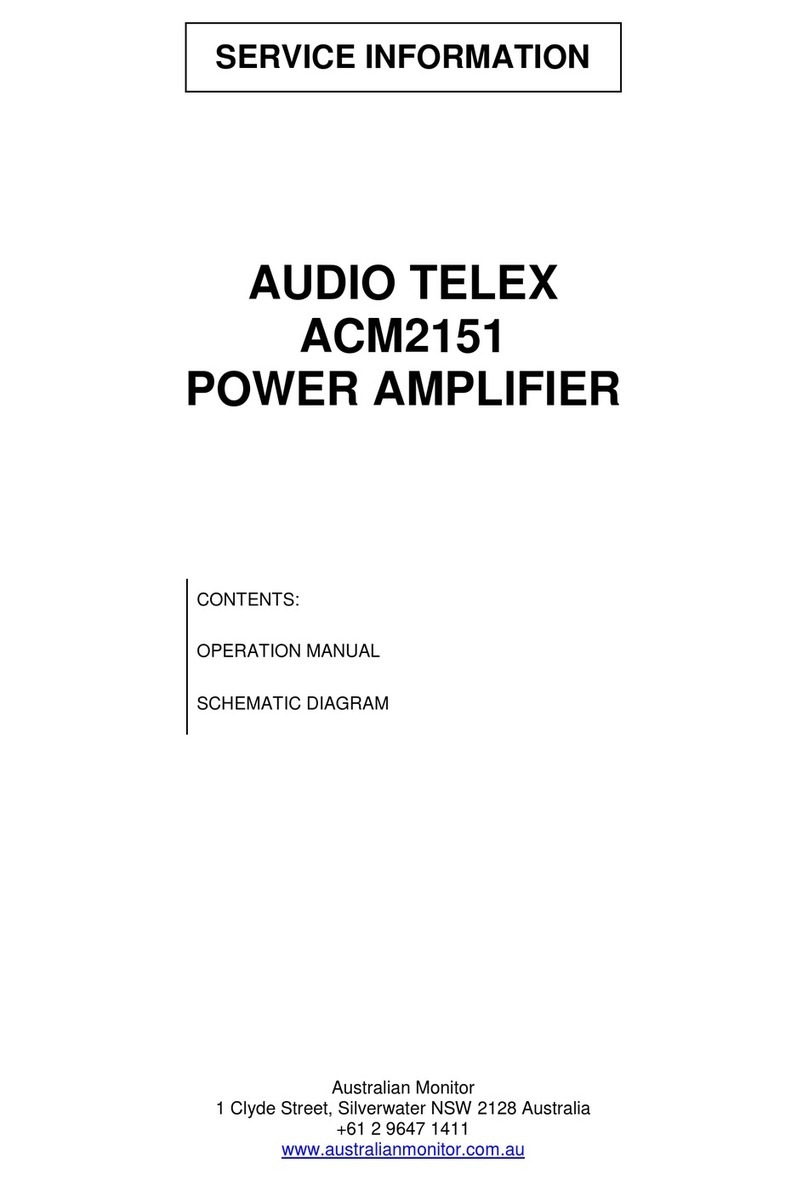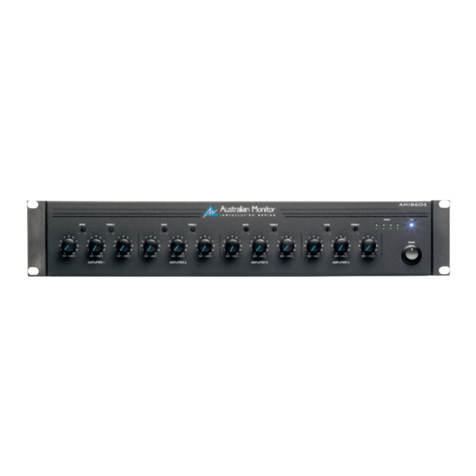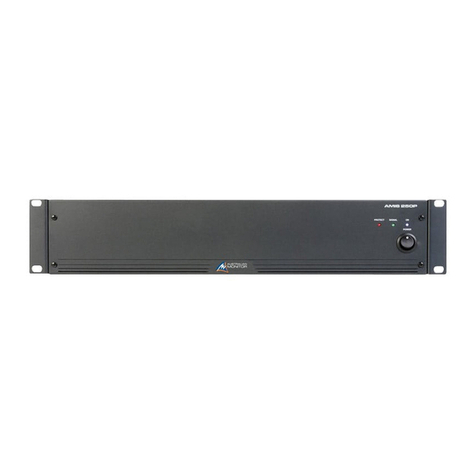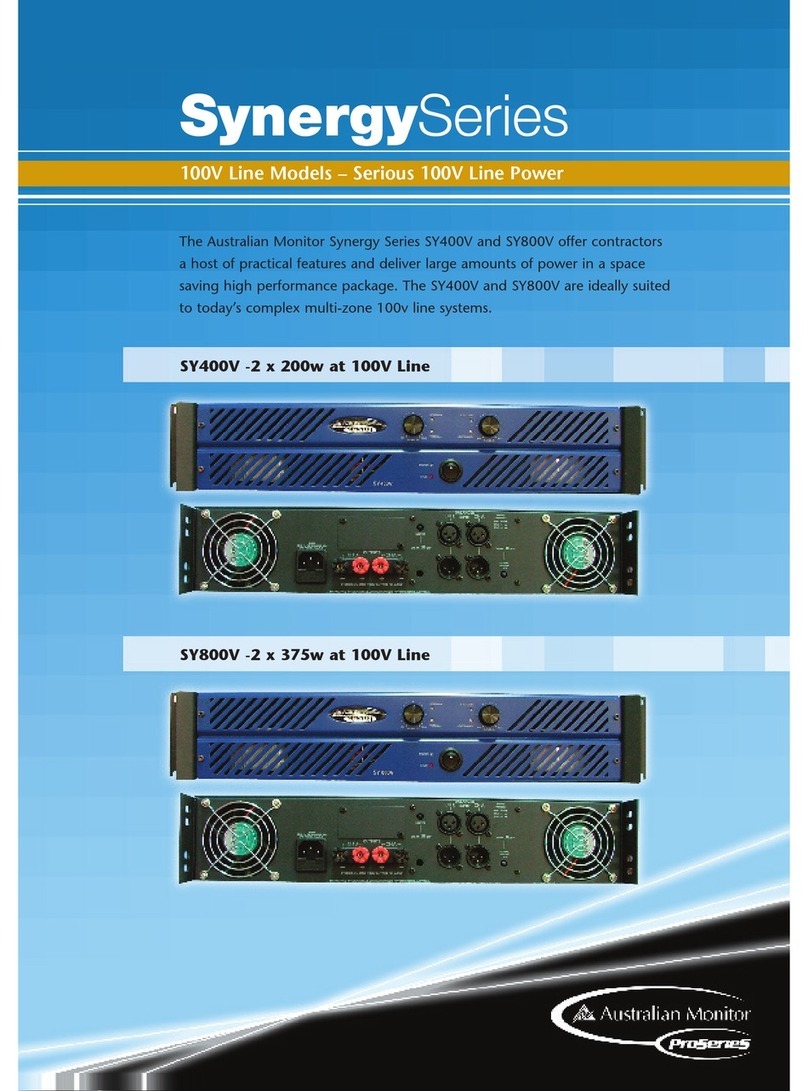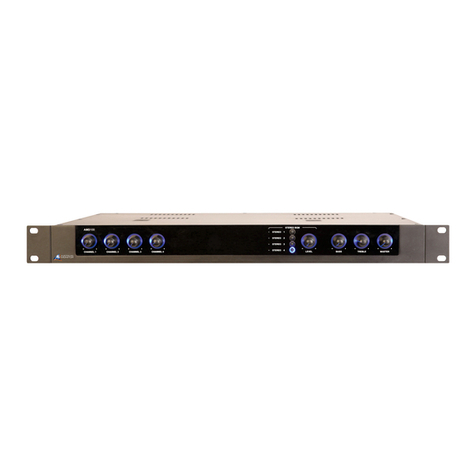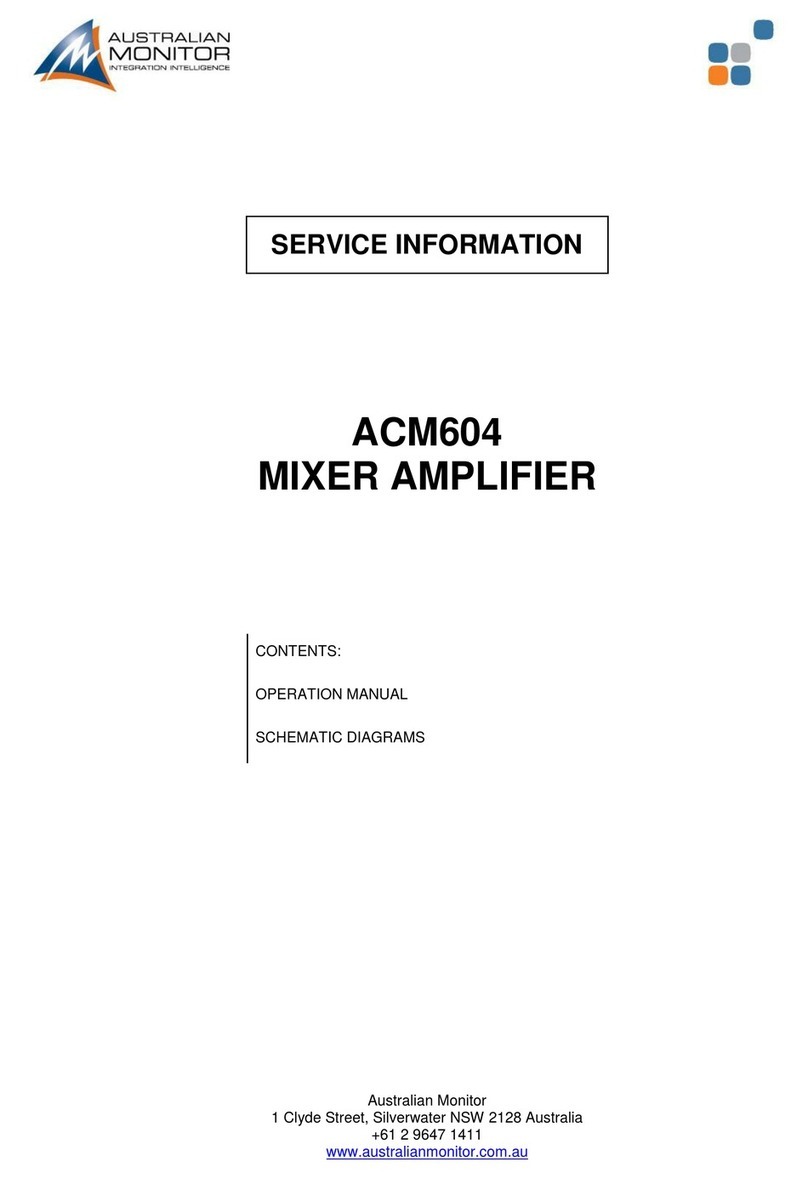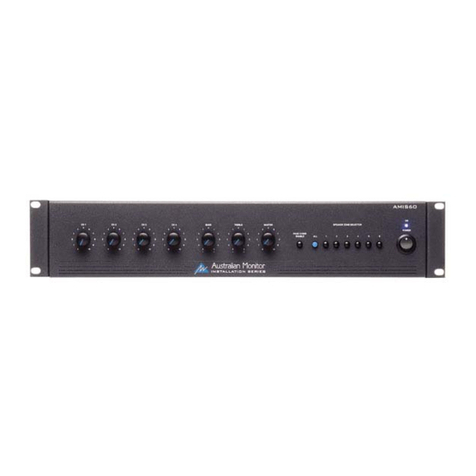Controls & Connectors 7
Front Panel
Figure t shows the panel layout of the AN30O2. The
funclions ofthe controls and indicators are as follows:
l. Attenuator
Level controlforyouramplifier is provided by a 21
position detented potentiomelerand indicates gain
reduction in decibels from the 0 dB position
(maximum gain, no attenualion).
2. VU Meter - Status Indicator
Level Indication (see inselt - l)
Each channel featuresa variable 1 0segmentdisplay
showing lhe actual power/volume level available
before clipping (taking mains supply and load duty
into account).
The display is colourcoded, and calibrated in 3dB
increments.
The 10 LEDS are:
Green = -27dBlo-21d8
Yellow = -18d8 to -6dB
Red = -3dB andthetwo LEDS indicating
the clipping point.
Power On Indication
Two Green LEDS either side of the mains switch
(above the "ON" legend) are used to indicate that
the unit is on. The first Green LED indicatesthe 15
Volt preamp supply is present (the len hand side
display shows -15V, andthe right hand sideshows
the +15V).
The next LED outwards is also a supply indicator
and shows that the Positive High Current Outpul
Rail is available to the corresponding channel.
NOTE: Theamplifieris notdamaged by running into
clipping, but speakers may be. To maximisethe life
ofyourspeekers, try lo keep clipping infrequent.
3. Power Switch
Pressthe switch DOWN for power ON and !,Pfor
power OFF. At start-up (turn-on) the input to the
amplifier is muted by 30dB for approximately two
seconds.
4. Thennal Indicator
When switching the amplifieron, this red LED will
flash momentarily, indicating conect operation of
the Mains ln-Rush Currenl Suppression circuit.
Aft erestablishment of lnrush Currenl Suppression
circuil the LED will extinguish. This LED will not
illuminate during normal use of the amplifier.
ln the advent of a thermal overload this LED will
illuminate red indicating that the internaloperating
temperature ofone or both amplifierchannels has
exceeded a safe levelofoperation andthe amplifier
will be shutdown. The fanswill continueto run and
oncethe amplifierhascooled down sufliciently, the
amplifierwill s{art up automatically providing lnrush
Current Suppression and input signal muting until
establishment of the amplifier afler which it will
retum to normaloperating mode.
NOTE:You should always ensurethatthe fan grille
is kept clean and free from the build up ofdust and
lint. Thiswill ensure longeroperation of youramplifier
and reduce the possibility of it prematurely going
intothermal shutdown mode.
5. Fault Indicator
ThisamberLEDwill illuminatewhen a fauttcondition
exists-
The fault detection circuit monitors the d ifference
between drive and output in youramplifier.
lfyou have a short circuit on the speakeroutput (or
a blown negative railfuse)the LEDwillflash brightly
in sync with the programme. This LED will also
flashwith programme peeksfor gross overloads or
if lhe load is 2 ohms or less.
The circuit hastwo stages of operation:
1 . ltwillprovide indication (e.9. grossoverload) but
does not affect the input signal (a faint flash).
2. lt will indicate and mute the input signal (e.9.
shorted outpul) (brightly flashing or permanently
on).
ln the advent ofa failurethe display panelrevertsto
a faull display to assist in diagnosis of the fault.
- The VU meterwill light up fully and the Positive
Output Rail LED will extinguish if the positive
supply rail is not available (check rear rail breaker).
- The fault Led will glow brightly if the Negative
output Railis nol available (check rea r ra il breaker).
- Failure of the pre-amp supply will cause the
amplifier to be muted and indicator LEDS to be
extinguished
Australian Mon'rtor /tu

